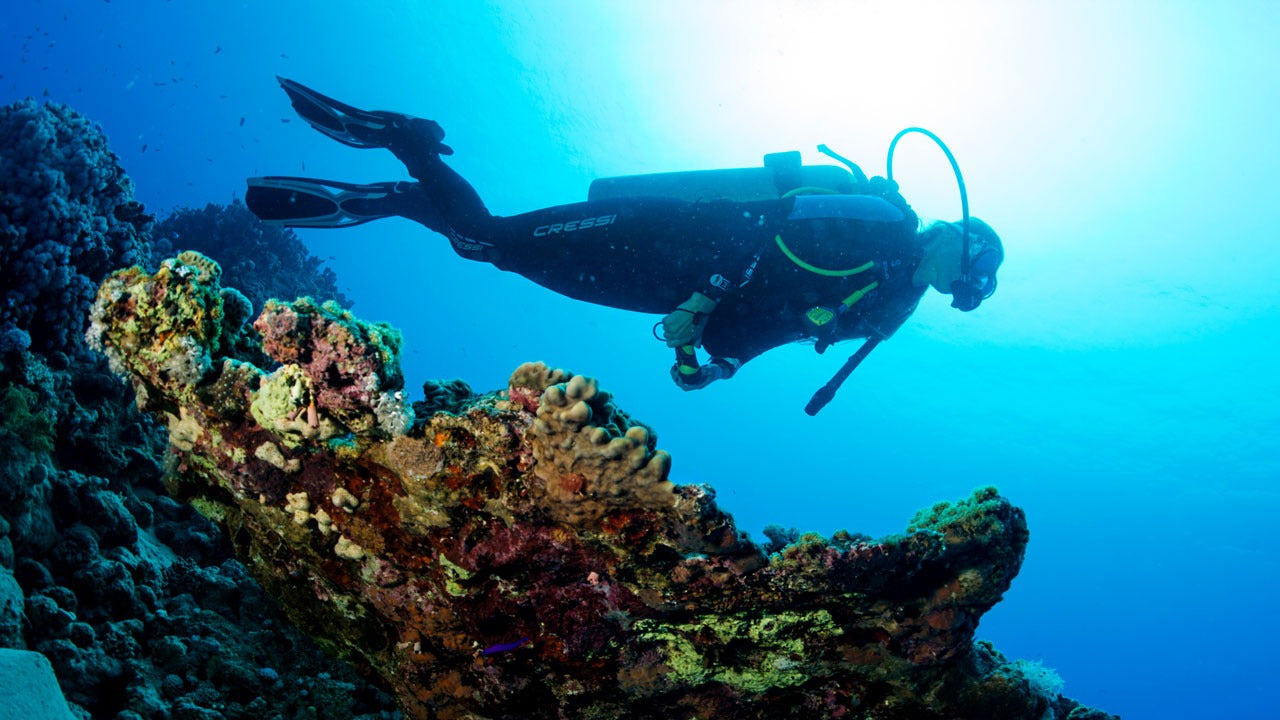5 Reasons to Use Reef Safe Sunscreen

As the weather is getting warmer and warmer, many of us start stocking up on various sun protection products. When choosing a sunscreen we usually look for an SPF number, water resistance, PA rating, etc. However, we often fail to consider how the products we use affect our oceans and the fragile coral reefs in particular.
Scientists have discovered that an estimated 4,000 to 6,000 metric tons of sunscreen rinses off of swimmers every year and, as a result, up to 10 percent of coral reefs are threatened by sunscreen-induced bleaching. Although this is not the worst problem that coral is facing, it is relatively easy to fix. Read on to learn why and how you can help to stop the sunscreen pollution.
1. Four common sunscreen ingredients were shown to kill or bleach coral.
- Oxybenzone (Benzophenone-3, BP-3) - sunscreen ingredient that disrupts coral reproduction, causes coral bleaching, and damages coral DNA. Oxybenzone is found in over 3500 sunscreen products worldwide.
- Butylparaben - preservative ingredient shown to cause coral bleaching.
- Octinoxate (Ethylhexyl Methoxycinnamate) - one of the active sunscreen ingredients shown to cause coral bleaching.
- 4-methylbenzylidene camphor (4MBC) - sunscreen ingredient was shown to cause coral bleaching. Allowed in Europe and Canada, not in USA or Japan.
2. The chemicals listed above can awaken coral viruses. The coral then become sick and expel their life-giving algae.
3. Even low levels of sunscreen (62 parts per trillion), can activate the algae viruses and completely bleach coral. For perspective, research is showing that oxybenzone concentrations on nearshore reefs around the world are commonly between 100 parts per trillion and 100 parts per billion - well within the range of being a significant environmental threat.
4. Oxybenzone is toxic to more than just corals and algae. Certain fish species suffer gender shifts, in which male fish take on female attributes, while females produce fewer eggs. The chemical also inhibits embryonic development in sea urchins. In mammals, oxybenzone can cause procarcinogenic activity.
5. Sunscreen pollution threatens the capacity of local subsistence fishermen to access the abundance of food that healthy nearshore reefs are supposed to provide.
Although the studies are ongoing and researchers continue to look for solutions, it is clear that any natural product (organic, biodegradable, etc) is better for the environment than the conventional sunscreen.
Although many forward-thinking manufacturers started creating some less-damaging products, not all sunscreens labeled “reef safe” are actually reef safe. You really have to read the labels to judge for yourself. Always look at ingredient lists to make sure such reef-damaging substances as oxybenzone, butylparaben, octinoxate and 4-methylbenzylidene aren’t included.
Consider looking for a brand that uses physical sunblocks such as titanium dioxide or zinc oxide instead of chemical ones. Remember though, these are not entirely worry-free either. Choose products containing non-nanosized (commercial designation above 150 nanometers in diameter) coated zinc oxide and titanium, as non-coated nanoparticles (less than 35 nanometers in diameter) can be toxic to corals, fish, and other reef organisms. Their toxicity arises from both their minuscule size and their interaction with cells, as well as the fact that they cause oxidative stress in sunlight, which means that they too can cause coral bleaching.
If you are shopping for an organic sunscreen, choose the one with the simplest formula. Some plant-based oils, including eucalyptus and lavender, can be toxic to reef organisms.
Apply sunscreen at least 10-15 minutes before going into the water and rub it in thoroughly, so that the lotion absorbs into your skin.
Finally, try to reduce the amount of sunscreen you use by wearing sun clothes such as skins and rash guards. Applying lotion to only the neck, face, feet and backs of hands can reduce sunscreen loads into the water by 90 percent.
Remember, when it comes to such issues as sunscreen pollution, we, divers, should lead by example, spread the knowledge and urge others to make informed decisions, so that we all can benefit from healthier and more vibrant reefs.




